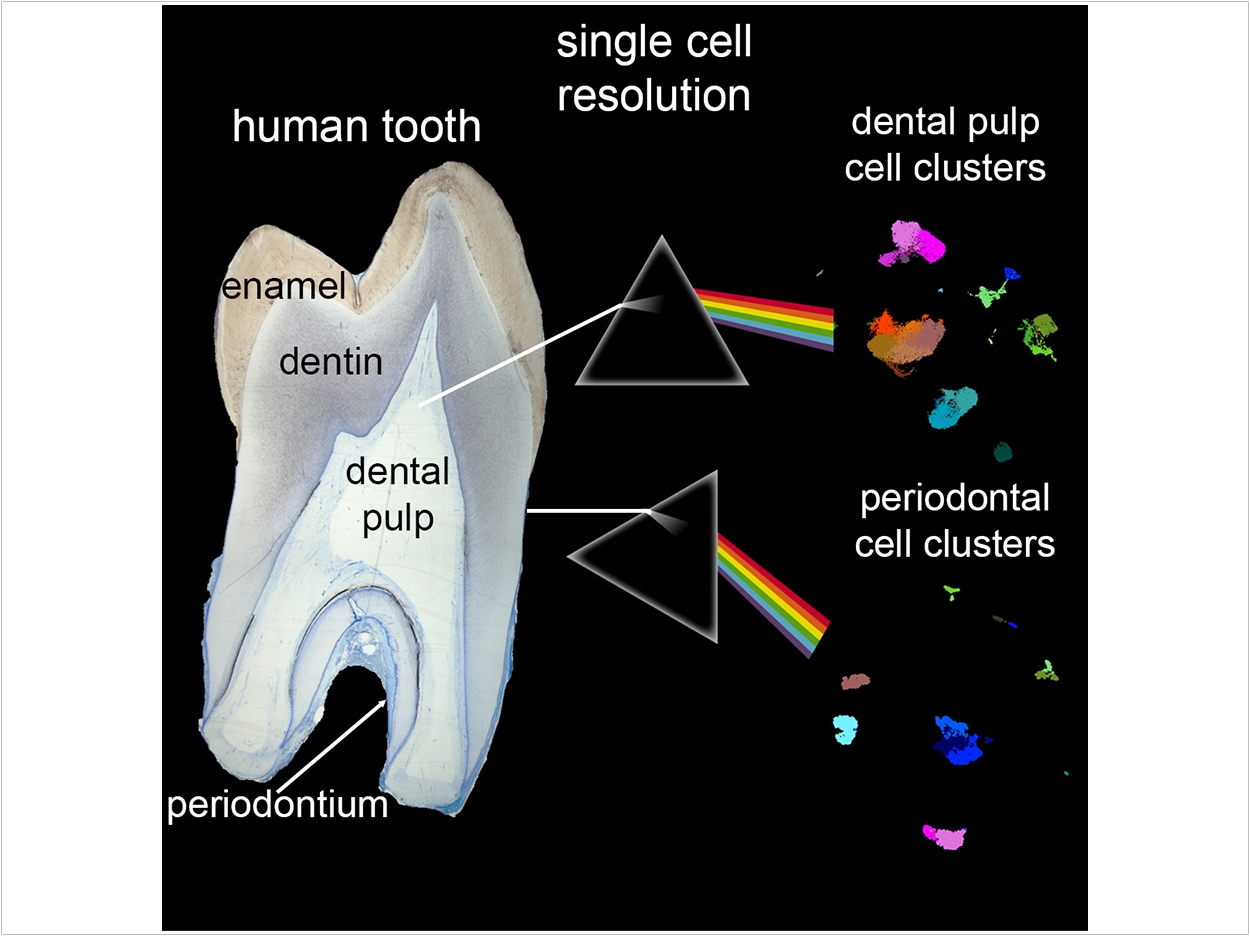
Researchers at the University of Zurich said they have mapped the first complete atlas of single cells that make up human teeth. They also said that their research shows that the composition of human dental pulp and periodontium very greatly, opening up new avenues for cell-based dental therapeutic approaches.
The researchers used advanced single-cell sequencing technology to distinguish every single cell that is part of the dental pulp and periodontium.
“Our study provides an unprecedented understanding of the composition of these two tissues, which are subject to tooth-specific and bacterially linked pathologies such as caries and periodontitis,” said coauthor and senior researcher Pierfrancesco Pagella of the Institute of Oral Biololgy at the university.
“Both the dental pulp and the periodontium contain stem cells that possess a great regenerative potential,” Pagella said.
The study identified great cellular heterogeneity in the dental pulp and the periodontium. Unexpectedly, the researchers said, they found that the molecular signatures of the stem cell populations were very similar.
“We think their different behavior is possibly brought about by their distinctive microenvironment,” said Pagella.
The findings suggest that the microenvironmental specificity is the potential source of the major functional differences of the stem cells located in the various tooth compartments, the researchers said.
The study also demonstrates the complexity of dental tissues and represents a major contribution to a better understanding of the cellular and molecular identity of human dental tissues, the researchers said.
“Single-cell approaches can help us understand the interactions of dental pulp and periodontal cells involved in immune responses upon bacterial insults,” said last author Thimios Mitsiadis, professor at the Institute of Oral Biology. “Therefore, single-cell analysis could be useful for diagnostic purposes to support the early detection of dental diseases.”
The findings then open up new avenues for cell-based dental therapeutic approaches, the researchers said. These advances in dental research also can lead to more appropriate therapies, successful regeneration of damaged parts of the teeth, and even more precise diagnostic tools in dental pathologies, Mitsiadis said.
“These innovations are the consequence of the fusion between bioinformatics and modern dentistry,” Mitsiadis said.
The study, “A Single Cell Atlas of Human Teeth,” was published by iScience.
Related Articles
Stem Cells Used to Regenerate Pulp and Dentin
Antibody May Be Able to Regenerate Missing Teeth
Researchers Reprogram Oral Epithelial Cells into Mesenchymal-Like Cells












